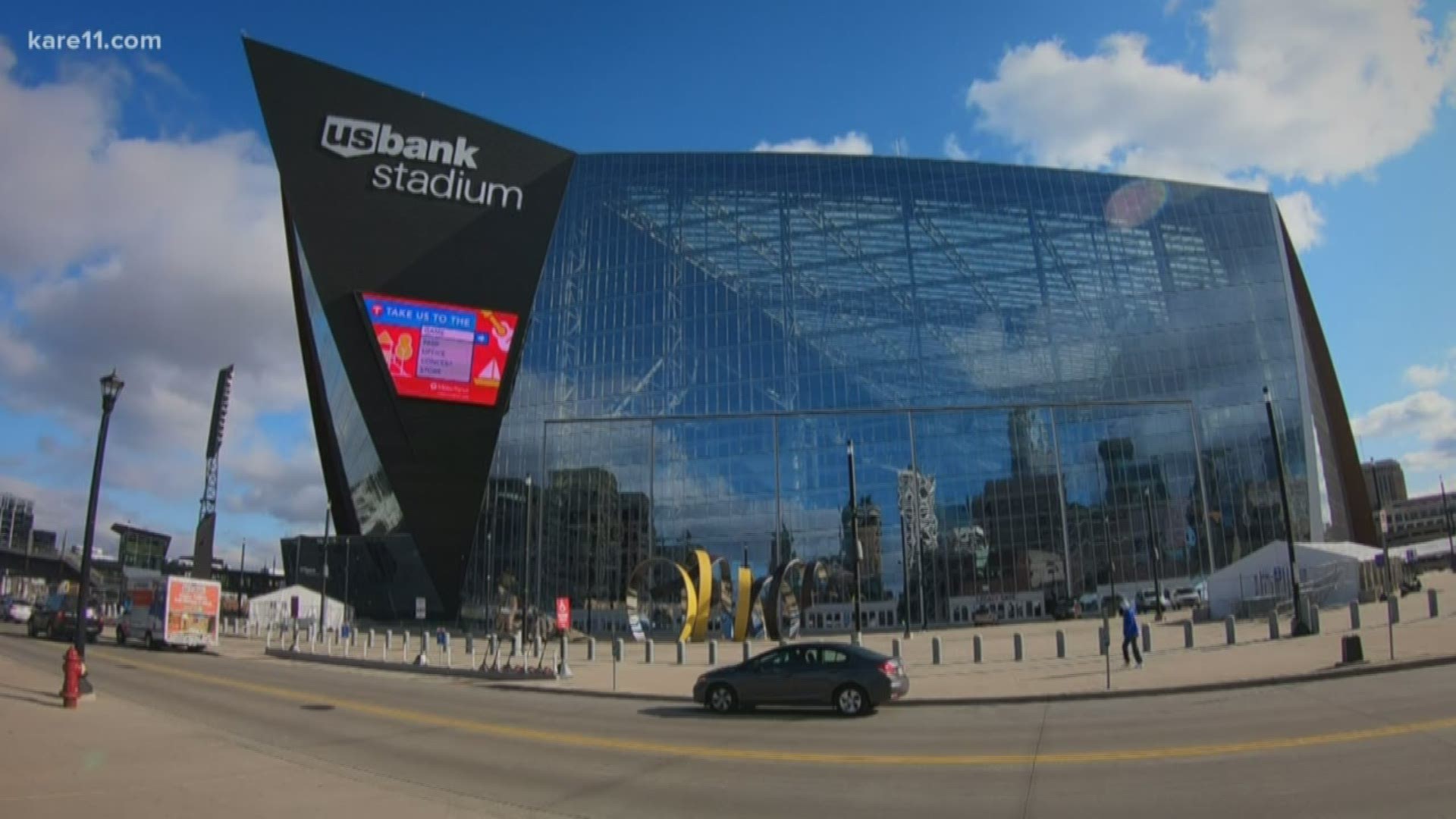MINNEAPOLIS — A two-year study is offering insight into the number of bird collisions at U.S. Bank Stadium. The issue has routinely raised concerns since the glass-heavy design of the stadium was first revealed.
The study monitored bird collisions at 21 buildings in downtown Minneapolis, including the stadium, from 2017 to 2018, focusing on the spring and fall migration seasons, as well as early summer.
According to the results, the stadium had the third-highest number of bird collisions over the study period, with 229. More than half of those collisions (159) were fatal for the birds.
The majority of the collisions at the stadium happened along the largest expanse of glass on the building, facing the main entrance plaza.
Long-term, the study estimates an average of 111 bird deaths each year involving the stadium.
"The main problem is the glass so birds see the reflection or they see through the glass to things they want to get to on the other side not realizing there's a solid barrier there," said Joanna Eckles at the Raptor Center.
The study's authors also considered factors that led to bird collisions, finding that "large glassy buildings with extensive nearby vegetation or park space cause the greatest numbers of collisions," as migratory birds find such areas attractive for food and resting areas. Glass with especially reflective or see-through surfaces was also a factor.
In their conclusion, the authors suggested treating large glass surfaces with visual markers, or reducing reflective or see-through surfaces, particularly in buildings with extensive lighting at night. The study also suggested avoiding the use of vegetation near glassy surfaces.
The authors said further peer-reviewed research is still needed to help reduce bird collisions at buildings.
The study was funded in part by the Minnesota Vikings and the Minnesota Sports Facilities Authority, however the study's authors said that funding did not influence the study's findings.
The full study is available for public viewing on the PLOS ONE website.
An article written in 2018 notes that bird safe glass could have been installed during the original constriction of the stadium, but the change in plans would have cost the project an additional $1 million. However, updating the glass at this juncture could cost Minnesota taxpayers as much $10 million.

